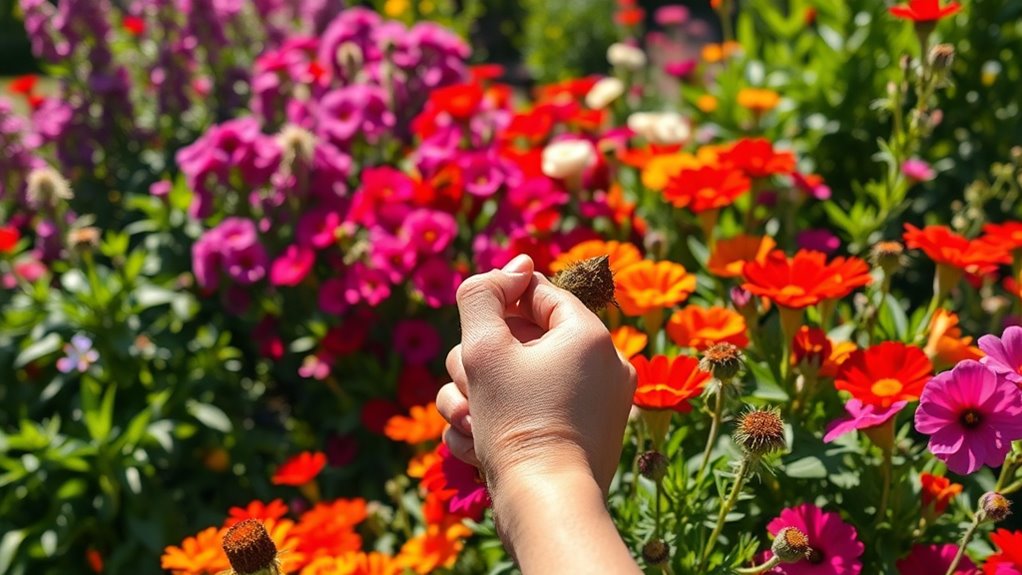The Deadheading Method That Boosted My Blooms
Many gardeners overlook the critical role of deadheading in maintaining healthy and vibrant blooms. It’s not just about aesthetics; this simple practice can significantly prolong the flowering season. By understanding the right technique and timing for deadheading, you can transform your garden’s visual appeal and plant health. This method goes beyond merely cutting back spent flowers; it’s about nurturing your plants for optimal growth. Discover the details that can elevate your gardening experience.
Understanding Deadheading and Its Importance
While you might admire the vibrant blossoms in your garden, understanding deadheading and its importance can significantly enhance their longevity and overall beauty.
Flower deadheading involves removing spent blooms to encourage new growth. This process not only improves appearance but also conserves energy for your plants, allowing them to focus on producing fresh flowers rather than seed formation. Incorporating proper pruning techniques can further enhance your garden’s aesthetics and promote healthier plant growth.
Implementing flower deadheading ensures a thriving garden.
When to Deadhead Your Flowers
When should you deadhead your flowers to achieve the best results? Timing is crucial. Generally, deadhead after the blooms wilting, or once the petals begin to brown. Monitor your plants regularly; some may require deadheading more frequently than others. Check the table below for specific flower types and their optimal deadheading times.
| Flower Type | Best Time to Deadhead | Frequency |
|---|---|---|
| Roses | After fading | Weekly |
| Petunias | As soon as wilted | Every few days |
| Geraniums | Once browning | Weekly |
| Marigolds | After petal drop | Every 2 weeks |
To achieve vibrant blooms, understanding the optimal deadheading times can make a significant difference in your garden’s health and appearance.
Tools You’ll Need for Successful Deadheading
Successful deadheading not only requires timing but also the right tools to ensure your flowering plants thrive.
You’ll need sharp pruning shears for clean cuts, a pair of gloves to protect your hands, and a small container to collect spent blooms.
Consider using specialized deadheading tools for hard-to-reach areas.
Having these tools on hand makes the process efficient and ensures your plants remain healthy and vibrant. Additionally, avoid common pruning mistakes such as improper cutting techniques to further enhance your plants’ growth.
How to Deadhead Different Types of Flowers
How do you know the best way to deadhead various types of flowers?
Start by identifying each type’s growth habit. For roses, snip spent blooms above a set of leaves.
For daisies, pinch or cut the stem just above a node.
For annuals like petunias, cut back to the next bud.
Always use clean, sharp tools to prevent disease. Performing timely deadheading is crucial for promoting vibrant flower growth, ensuring that your plants continue to thrive.
Benefits of Regular Deadheading
Deadheading not only enhances the aesthetic appeal of your garden but also provides several benefits that contribute to the overall health and vitality of your plants.
Regular deadheading prevents plants from setting seeds, redirecting energy towards new growth and blooms. Additionally, it minimizes diseases by removing decaying flowers, promotes better air circulation, and encourages a longer blooming period, ensuring your garden remains vibrant throughout the season. Furthermore, effective pruning techniques can further enhance blooming by shaping plants and encouraging bushier growth.
Common Mistakes to Avoid While Deadheading
Many gardeners make critical errors during the deadheading process that can undermine their efforts.
One common mistake is waiting too long to deadhead, allowing flowers to set seed.
Additionally, using dull tools may damage plants, while cutting too low can stunt future blooms.
Finally, neglecting to remove dead material can lead to disease, hindering your garden’s overall health and productivity. Furthermore, incorporating elegant flowers into your garden design can enhance not only beauty but also the efficacy of your deadheading efforts.

